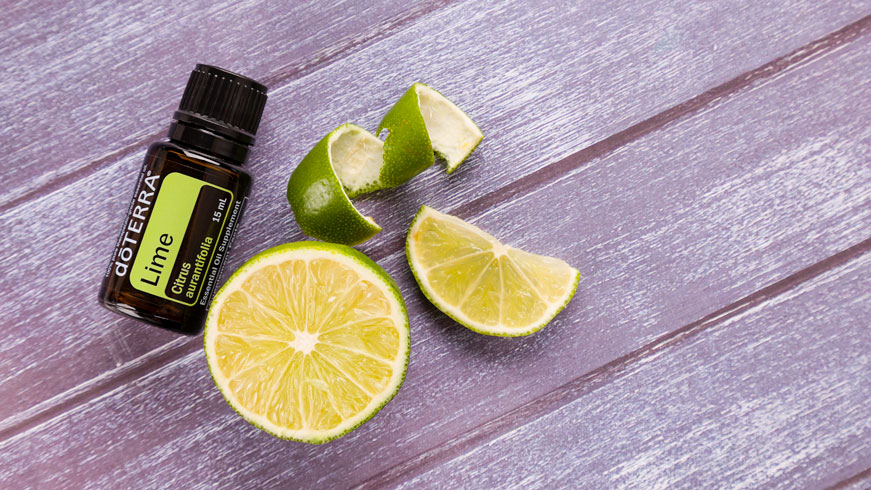Origin: a Latin derivative
meaning "Gift of the Earth."
Five Things You Might Not Know about Lime Essential Oil

Introduction
Lime essential oil is an indispensable part of doTERRA’s citrus lineup. Its tart, refreshing aroma is always a sure bet in any diffuser blend or fragrance. Despite its familiarity, Lime oil and its source fruit have a storied history and interesting informational tidbits that may surprise you.
Here are five things you might not know about Lime:
- Lime oil is one of the most commercially traded essential oils in the fragrance industry. With its scent profile described as zesty, sour, and airy, it provides a tangy top note to many fragrances. Lime oil will most often be found in light, summery perfumes.
- When you picture a lime in your head, chances are you are envisioning the classic, oval shaped lime used for juicing, zesting, or garnishing. What you’re thinking of is the Persian lime, the most widely cultivated variety of lime worldwide. However, doTERRA Lime essential oil is not sourced from the Persian lime, but from its smaller, spherical cousin: the Key lime. Key limes are a hybrid between two citrus fruits, the papeda and citron. This hybrid originated in Southeast Asia and was eventually brought to the Florida Keys by Spanish explorers, where it earned its name.
- Like in all citrus oils, limonene is a dominant chemical constituent in Lime essential oil. Lime oil also contains significant concentrations of gamma-terpinene and beta-pinene, but its chemical composition can be diverse. In fact, researchers identified up to 62 different compounds in lime oil, depending on the source of the oil.
- Everyone knows that limes are categorized as citrus, but did you know that citrus fruits, and therefore limes, are technically berries? Botanically speaking, a berry is a pitless, seeded fruit that originated from one flower. By this definition, some things we normally call fruits or even vegetables are botanical berries, such as cucumbers, tomatoes, pumpkins, and bananas.
- Although the limes in doTERRA Lime oil are sourced from South America, India is actually the largest producer of limes in the world. India produces about 17 percent of the world’s limes. Limes are staples of Indian and Asian cuisine, providing a signature tangy flavor to many traditional dishes.
Conclusion
As you can see, there’s more to Lime essential oil than meets the eye. Now that you’re armed with some neat facts, you can offer a great learning opportunity along with an exquisite aromatic experience the next time you share Lime essential oil.





